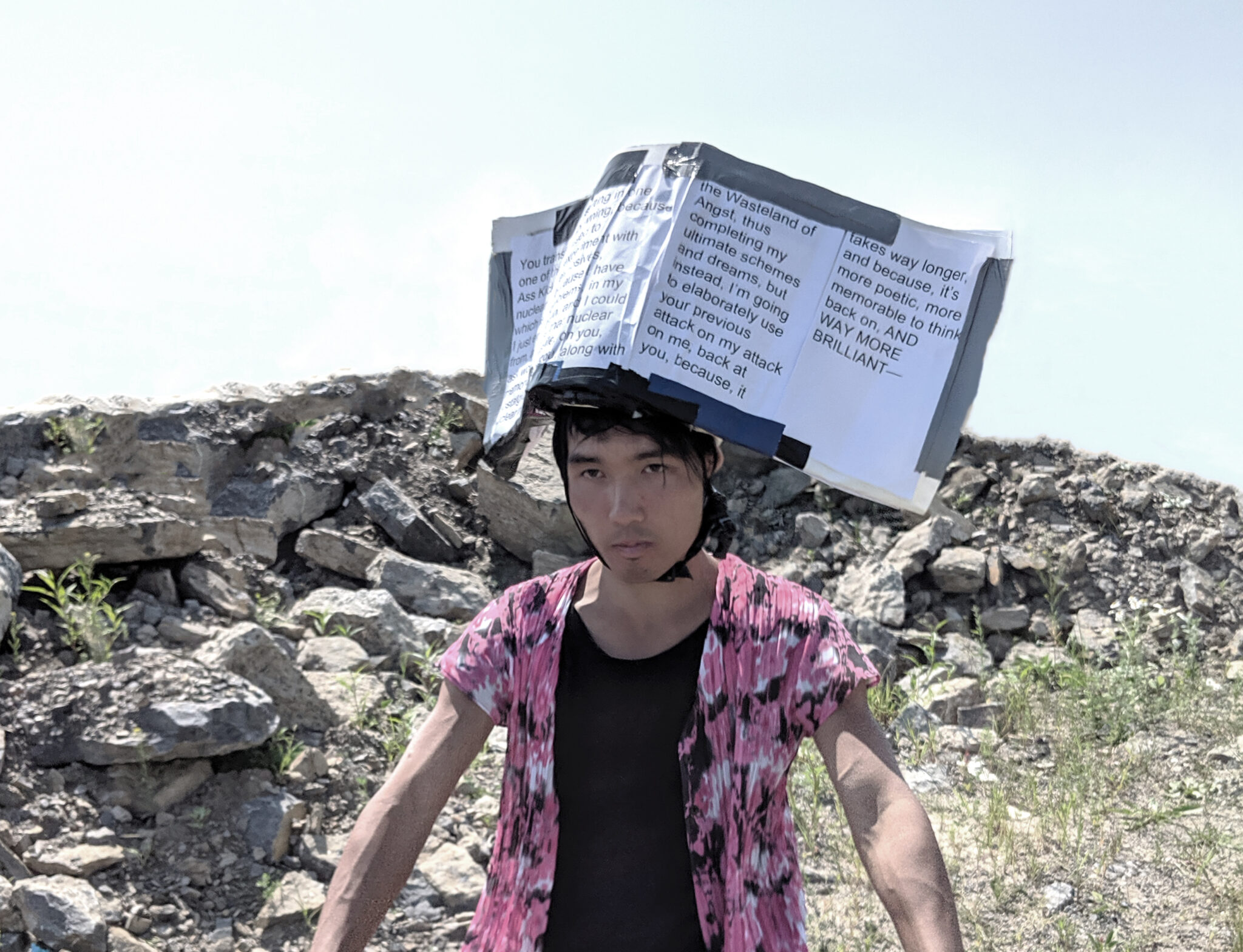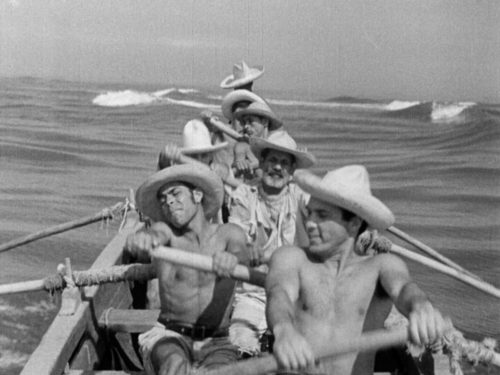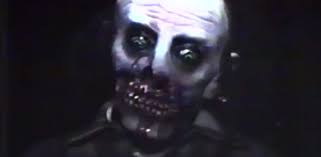Frankie Vanaria looks back on one of the most notorious slasher films of the ’80s and its complicated vision of identity and alienation
Robert Hiltzik’s Sleepaway Camp (1983) is an uncommonly touching slasher film, even if its political and social viewpoint is dubious (as is true of many films in the horror genre). It turns on the interplay between the manifest and the mysterious, wherein there are some images of abject horror that demand to be looked at, as well as other moments or aspects of a character’s actions that are alluded to but never explained. It feels as if Sleepaway Camp is told and styled in a way that approximates how a child — even younger than the teens featured in the film — might tell a story about their experience at camp that strains credulity even as it leaves a lasting impression on the listener.
In the film, teenage cousins Ricky (Jonathan Tiersten) and Angela (Felissa Rose) attend Camp Arawak. Ricky is a typical teen boy who is eager to return to the camp to see and play with his friends and to resume the summer romance he had the year before with the camp’s most “popular” girl. But this is the first camp adventure for the withdrawn Angela, who barely speaks to or interacts with anyone other than her cousin. Her reticence is implicitly the result of a tragic boating accident she survived years ago, which resulted in the deaths of her father and a child, who we are led to believe was Angela’s brother, Peter. Following the accident, Angela came under the guardianship of her Aunt Martha (Desiree Gould), meaning that Ricky is more of a brother to her than a cousin. Angela’s refusal to cooperate or socialize with the other girls is a major point of friction. It makes her into a pariah with the other campers, especially Judy (Karen Fields), Ricky’s former fling, and her friend Meg (Katherine Kamhi), one of the teen counselors. This results in Angela being harassed repeatedly by the other campers. Ricky is invariably made to suffer their torments as well whenever he steps in to protect his cousin.

More sinister presences make themselves known at Camp Arawak, however. This much is obvious from the moment the kids arrive and are leered at by the head chef, Artie (Owen Hughes). It is abundantly clear that this man is a pedophile, and his coworkers seem to be suspicious of him too but simply brush off his ogling. When Angela refuses to eat anything from the cafeteria, Artie jumps at the chance to get her alone in the kitchen and attempts to sexually assault her, until Ricky intervenes at the last minute. Cut from the same cloth as this monstrous chef is Mel (Mike Kellin), the proprietor of the camp, who has an inappropriate relationship with Meg, which has implicitly been going on for some time, possibly for a number of years. In addition to his perversions, Mel is also a man without any scruples about running the camp in an ethical or safe way (which does, in part, explain the obvious absurdity of Artie’s employment there), and when the murders at the camp begin, he does everything he can to quell any noise about them, fearing that parents of the campers will pull their kids and their money and bankrupt his shoddy and nefarious enterprise.
Artie is the first to be attacked, which begins a pattern for the rest of the film: All of the murder victims are people who, in some way, have wronged Angela or Ricky. The assailant is not identified until the end of the film, and is, par for the course for a slasher film, only embodied by thin, white arms and hands that boil, stab, drown, sexually assault, shoot, and decapitate people. Towards the end, Camp Arawak has descended into chaos, with so many attacks on campers and staff that there is no choice but to send the kids home. Ricky searches for Angela, who has gone off with his friend Paul (Christopher Collet), but he encounters Mel. The charlatan blames Ricky for the murders, jumping to the bizarre conclusion that the boy did it in retaliation for the torments that Angela has been made to suffer. Crazed, Mel murders Ricky, and moments later, Mel himself is killed by an arrow through the throat.
The film ends with two counselors searching for Angela, and they find her sitting by the water, humming as she cradles Paul in her lap. Given the circumstances, it is an unnervingly serene image, and it beckons the curiosity of the counselors who move in closer. In doing so, they see that Paul has also been murdered, and it is implied that she has been the one behind the attacks. Not only this, but in the film’s true reveal, the counselors learn that Angela has male genitalia. The almost entirely non-verbal Angela now communicates only with a slow, blood-curdling growl, her mouth dropped open and her eyes fixed in a state of delirium as she stands before the two counselors, entirely nude. Astonished, one of the counselors, Ronnie (Paul DeAngelo, a fitting name), exclaims “God! She’s a boy!” and the film ends with a freeze-frame of Angela’s monstrous face as the hissing and growling continues.
The freeze-frame is a fascinating gesture to end with. It seems to be predicated on the assumption that the characters and the film’s audiences have reached some final knowledge: We know that Angela is the killer, and we also know that Angela is not female; however, there is a great deal that we do not know, even with the context Hiltzik provides through some truly jarring editing. When the counselors begin to approach Angela, suspicious of why she is unaffected by the disarray around her, there is a flashback to Aunt Martha, who seems to be welcoming a child into her home. Based on Martha’s detached — and honestly, quite terrifying — commentary, we can piece together that in the boating accident from the beginning of the film, Angela and her father were killed, but Peter survived. In this flashback, his head is wrapped in bandages, which seems to suggest that the boy suffered enough trauma from the event that he does not know his identity. Martha, however, supplies him with one. She laments that she does not have a daughter (Ricky is her only child) and proceeds to call Peter by the name “Angela” which, she adds, means “angel.” This conceit in itself is horrifying, that Peter would be forced to live according to what his aunt wants, and that this results in him assuming a gender that he presumably did not or would not identify with if he were not involved in the accident and had not lost his identity in the first place.

Given this presentation, it is entirely plausible for audiences to take issue with Sleepaway Camp as a potentially transphobic film. Since Angela’s identity is forced upon her by Martha, it is possible to take this as implying that trans or nonbinary identities are artificial constructs in violation of some natural association between biological sex and gender: That is, children who are born male are necessarily boys, and females are girls, and there is no alternative to this that is not a perversion of human socialization. Aunt Martha, in this sense, is horrifying for her breach of the sacred trust between child and (figurative) parent, in that she only sees Angela as a vessel for her own fulfillment and purpose (wanting to be a mother to a daughter), and sees the traumatized child standing before her as easy prey who cannot resist or consent to taking on this identity as “Angela.” Moreover, not only can Sleepaway Camp seem to suggest that any non-cisgendered identity is “fake” or the construction of nefarious adults who harm children by promoting the idea, but it can also seem to pathologize trans identity as a form of “madness” that leads to murderous impulses. Essentially, Angela’s “gender confusion,” as it were, is part and parcel with her inability to control her violent outbursts, which therein suggests that the girl is in need of psychiatric intervention to “cure” herself of her abnormal tendencies. Of course, the freeze-frame foregrounds how lost Angela really is. She has crossed the threshold from human to monster, which seems to feed the perception of trans persons being wolves in sheep’s clothing. The film could be seen as promoting the same kind of conservative paranoia we see spread about how kids need to be protected against trans people using public restrooms.
Despite these perfectly legitimate issues to raise with Sleepaway Camp, I think there is also a more charitable reading of the film, which sees it as being quite sympathetic to Angela and her alienation from the people around her. Setting the reactionary attitude toward Angela’s trans identity aside, there is a kernel of truth to the film’s presentation of the gender. Angela’s struggle to fit in, or to simply be left alone and not be made to feel like she must socialize with the other girls (or almost any of the other campers) is a very recognizable situation. It is terrible, especially at such a young age, to be forced to socialize with other people you don’t know, just because you’re the same age and gender as them. Of course there is an edifying value to this kind of interaction, but it can be a hard thing for a kid to do, especially when being coaxed by an adult who is seemingly indifferent to the strangeness of the situation. From this perspective, Angela’s horrifying violence takes on a certain importance: It tears at the social fabric of the camp and its supposed normalcy. This pertains especially to the way that boys and girls are expected to act together. Judy and Meg demand that the rest of the girls comply with their alpha status. Ricky encounters the same problem with the boys on the other side of the camp. The boys and girls are even expected to have their camp flirtations and jealousies. Although this does not negate the potentially problematic dimensions of how Angela is depicted, her violence and monstrosity is sympathetic, to a degree, because the conformity and restrictiveness at the camp is such a difficult thing for the outcast Angela to navigate. There is, in a way, a radicalness to what Angela does at Camp Arawak, even if the film does not lionize her for what she does.
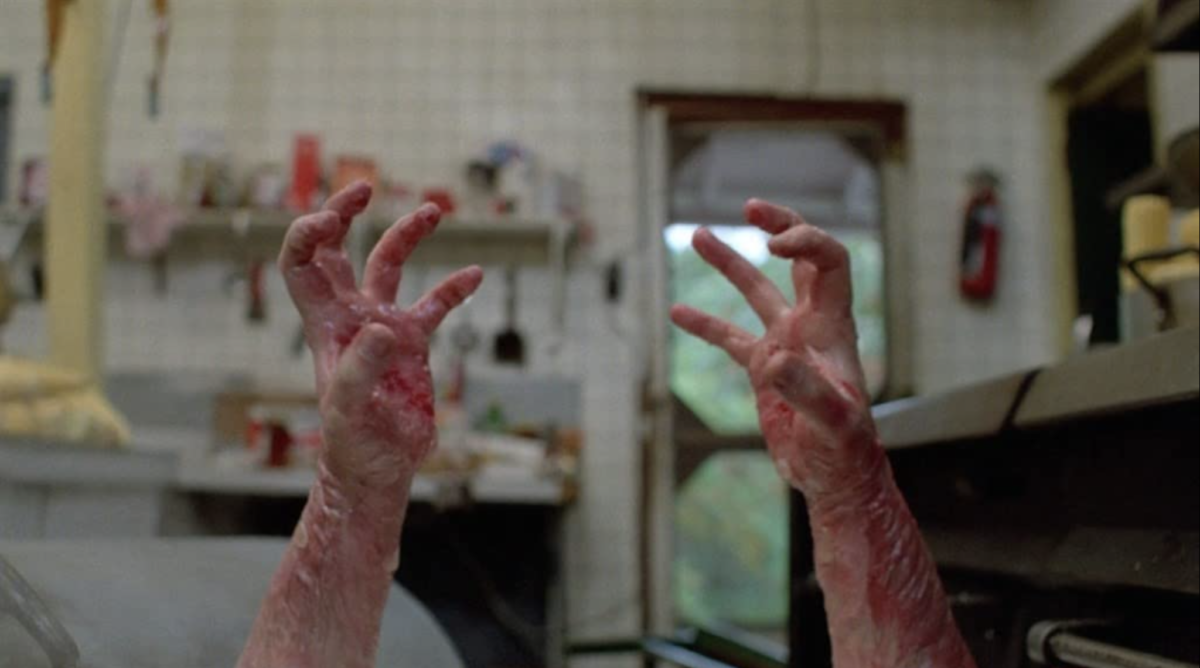
This is what makes the ending of Sleepaway Camp, with the freeze-frame in particular, such a loaded image. The technique and close-up suggest that Angela is incapable of changing, that she has been so traumatized by what the boating incident and her Aunt Martha have done to her that she is incapable of even expressing herself with human language. Even so, this shot also calls to mind the possibility that something might have gone differently for Angela, or possibly even that she could change or get better somewhere in the distant future. The freeze-frame brings out the oppositions of motion and stasis, life and death, and perhaps socialization and isolation as well. In this shot, we are left to contemplate not just Angela in her monstrosity but also in her detachment from others — she is, after all, alone in the frame, and it’s hard, upon a first viewing, to avoid the suspicion that the film might resume normally. We are left waiting for Angela to move out of the frame and continue to interact (violently) with the other characters. Perhaps Angela might destroy the camp and its oppressive and abusive strictures? Or maybe Angela will somehow be subdued by the counselors and get the help that she needs?
Either way, Sleepaway Camp asks us to spend this time with Angela in the freeze-frame. We look at her as a monster, potentially, but Hiltzik asks us to look past this nightmarish image, too. Even if the film might be said to indulge transphobic attitudes in some ways, it is doing something else, too. It requires that we see Angela beyond her appearance, not simply in the sense that she is biologically male, but to see her as a person. Even if a viewer is approaching this from the perspective that Peter was a victim of Aunt Martha, who turned him into Angela through years of abuse imposing a gender identity on him, this presentation also goes beyond mere caricature or provocation. That is, the film contends over and over again, even in the face of its revelations about Angela, that she (or he, depending on the perspective that one brings) is a person who has consistently been subject to torments throughout her life, with almost no one treating her like a human being. Despite the film’s ambivalence about Angela’s identity and her demonic character, Sleepaway Camp is also surprising for its humanism.
Find the complete October Horror 2021 series here:
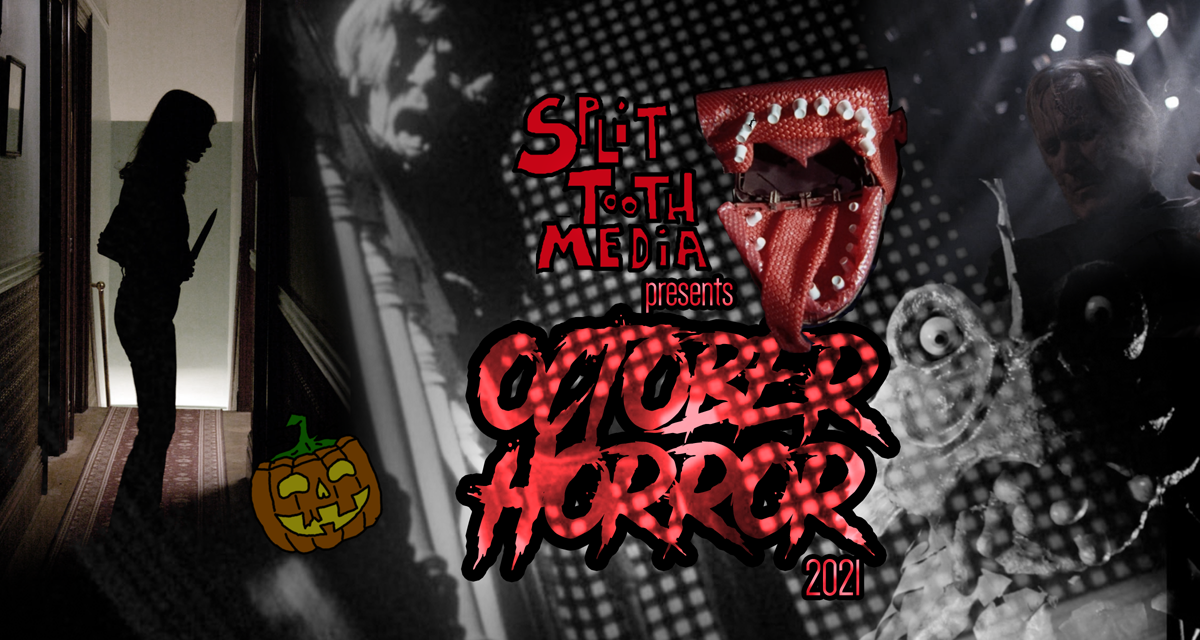
Stream or purchase Sleepaway Camp
Find Sleepaway Camp on your favorite streaming service through JustWatch
Stay up to date with all things Split Tooth Media and follow Frankie on Twitter
(Split Tooth may earn a commission from purchases made through affiliate links on our site.)


